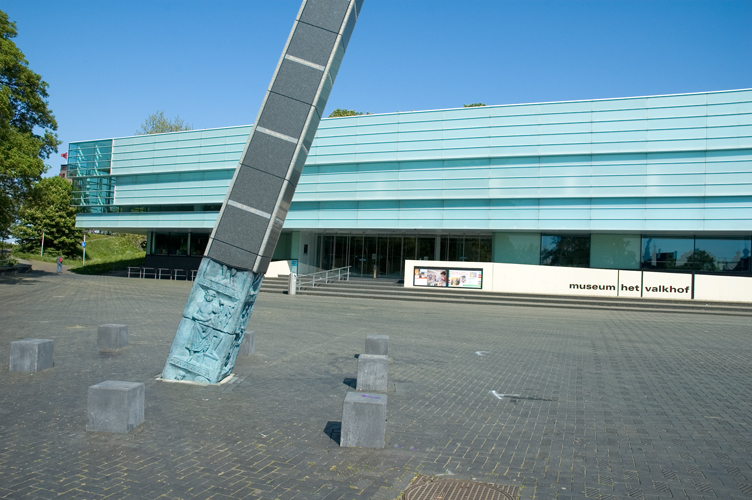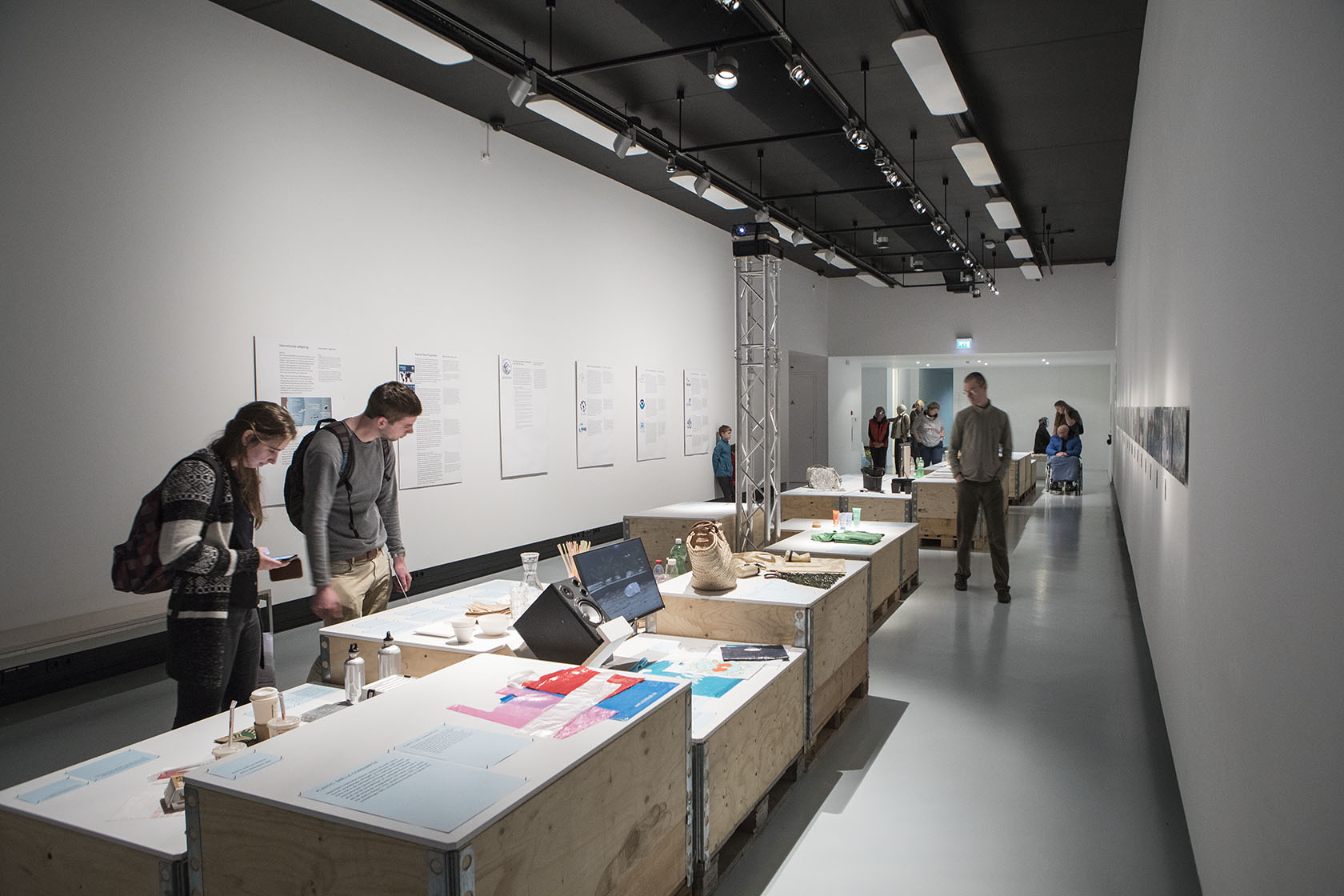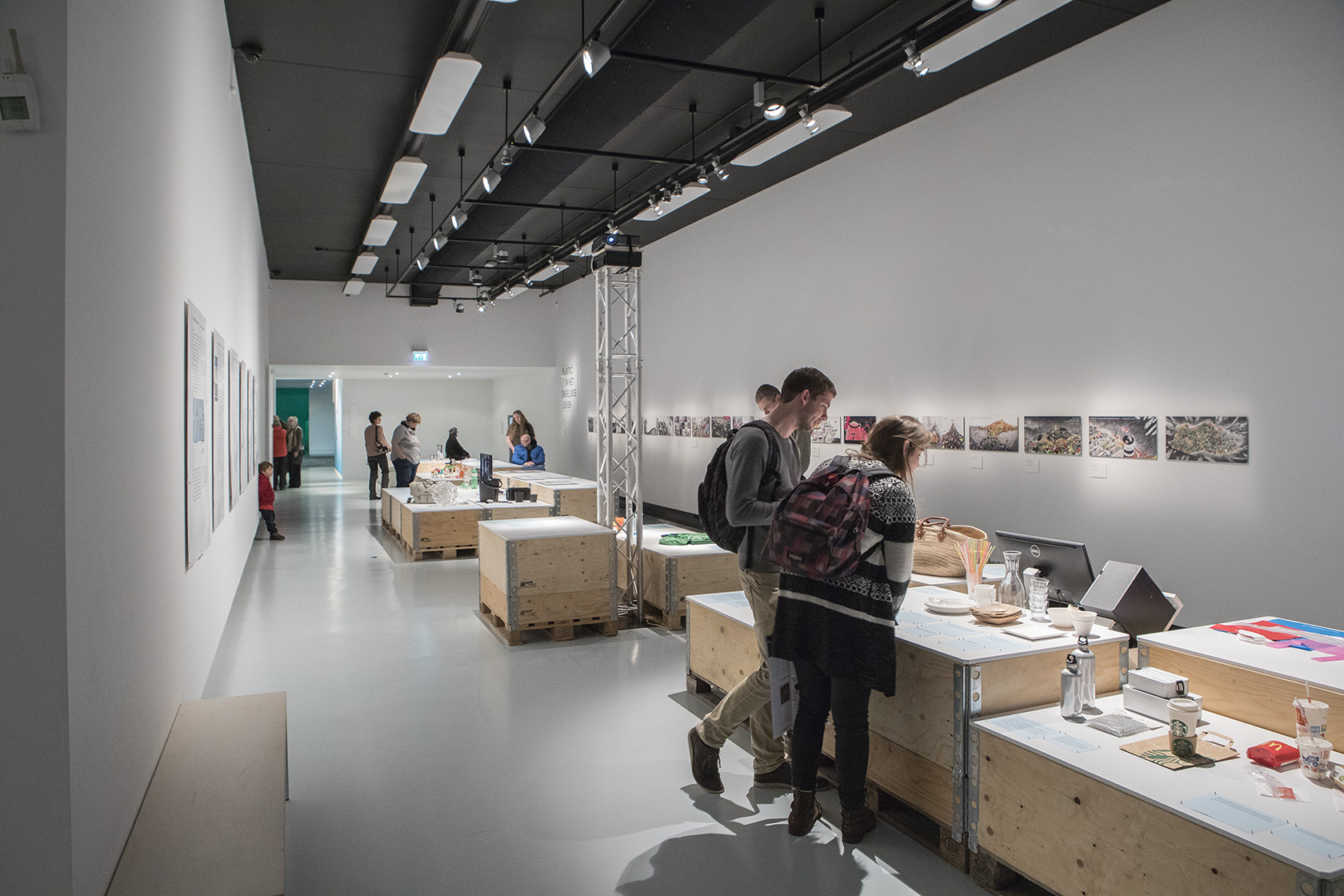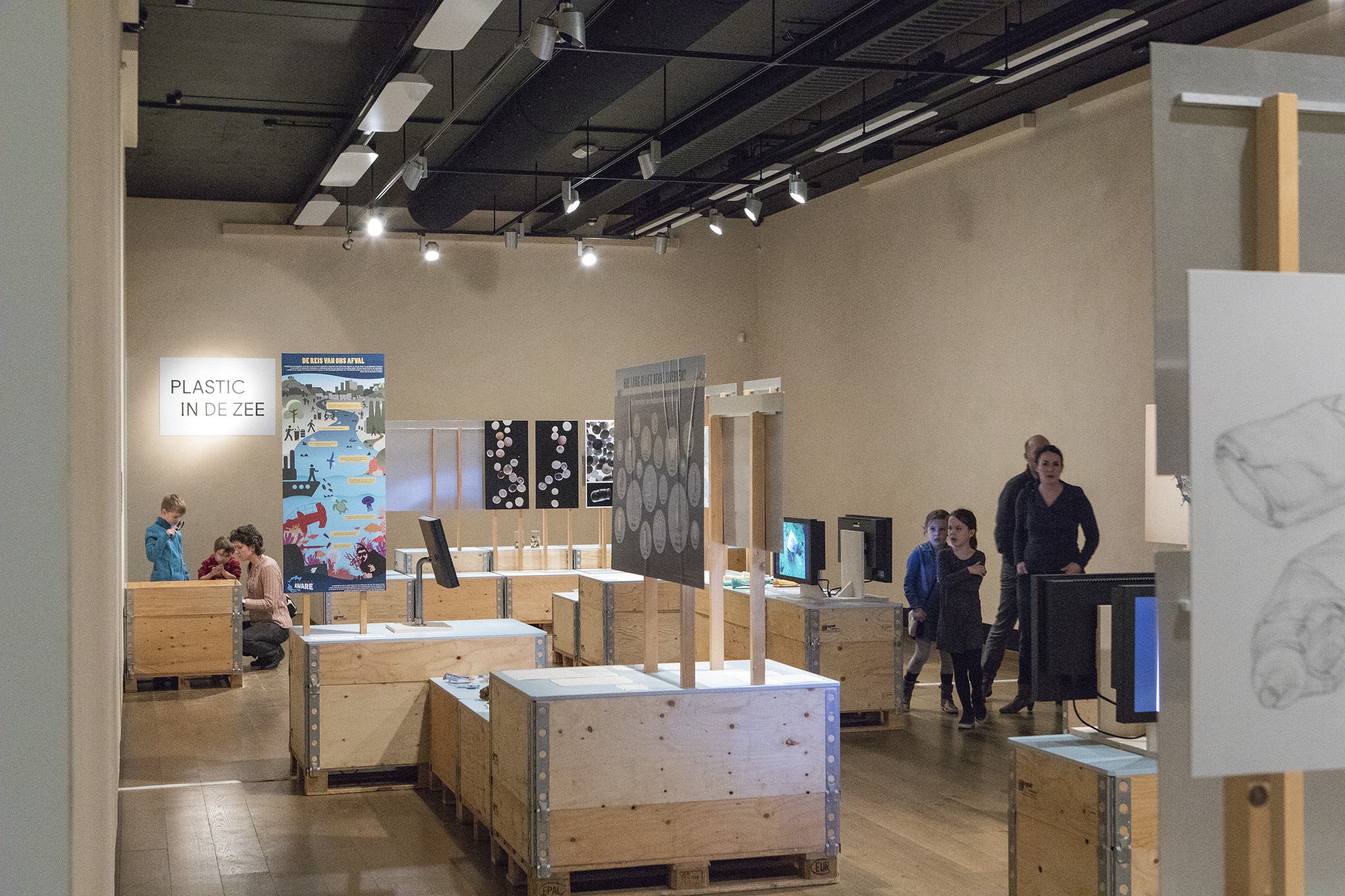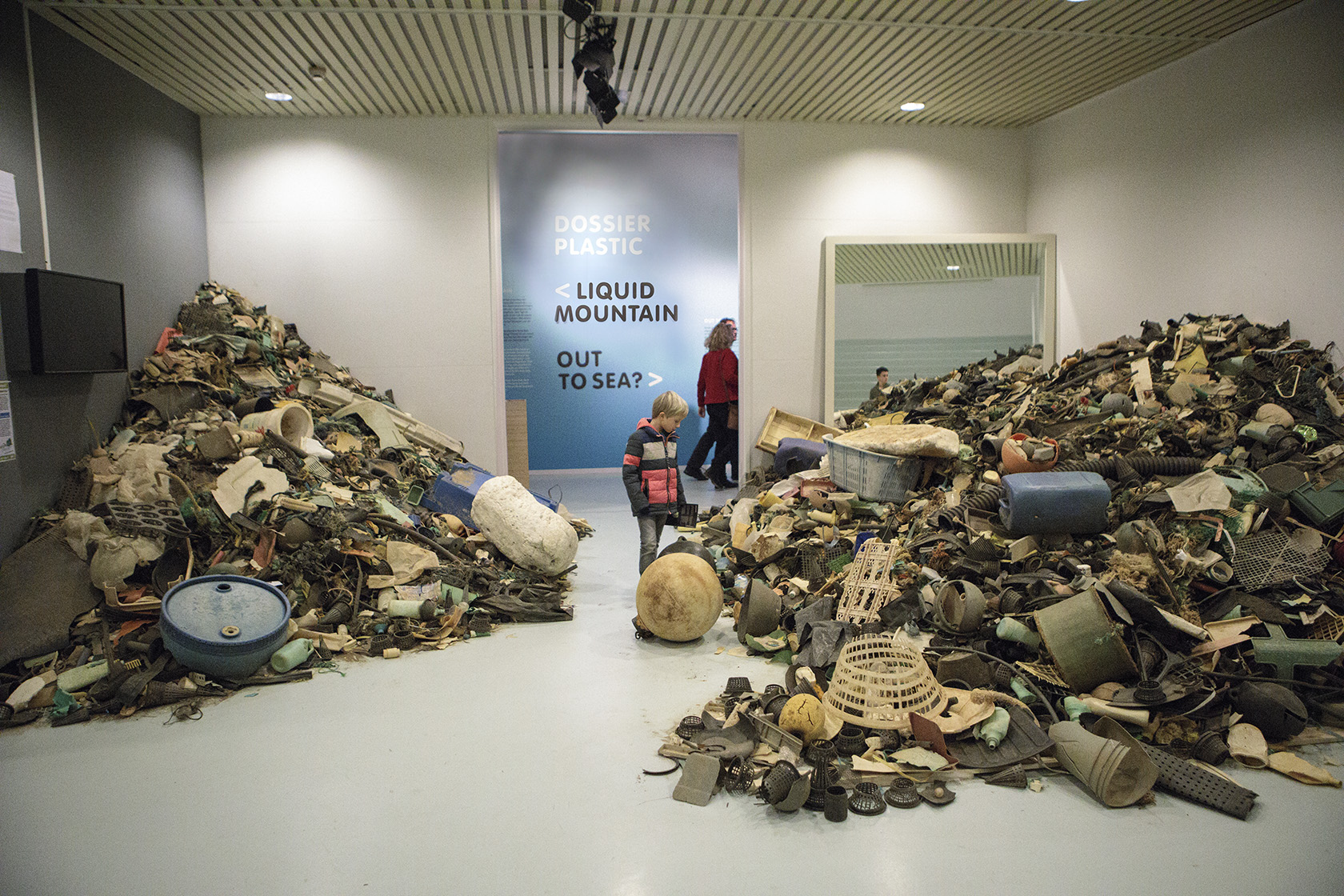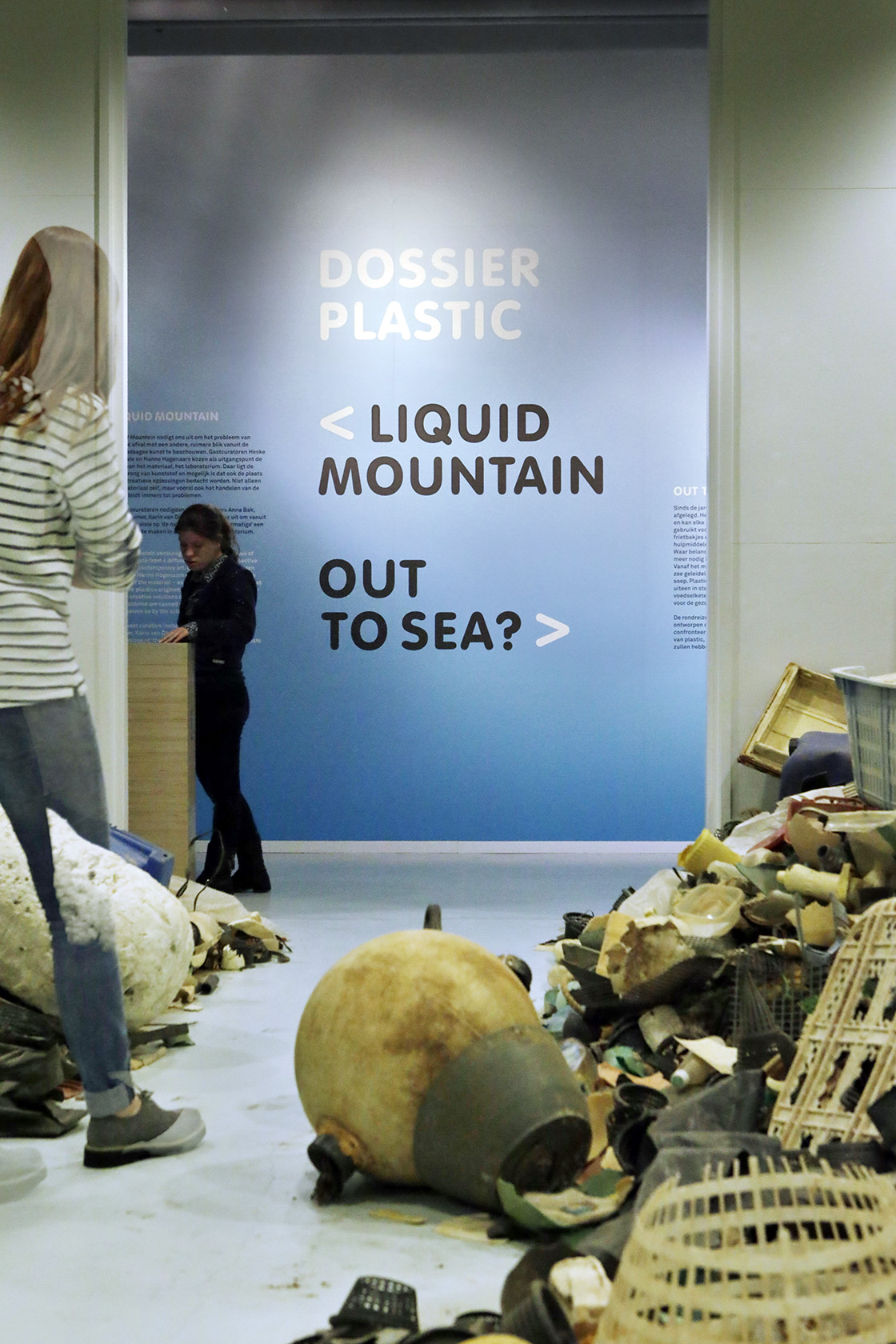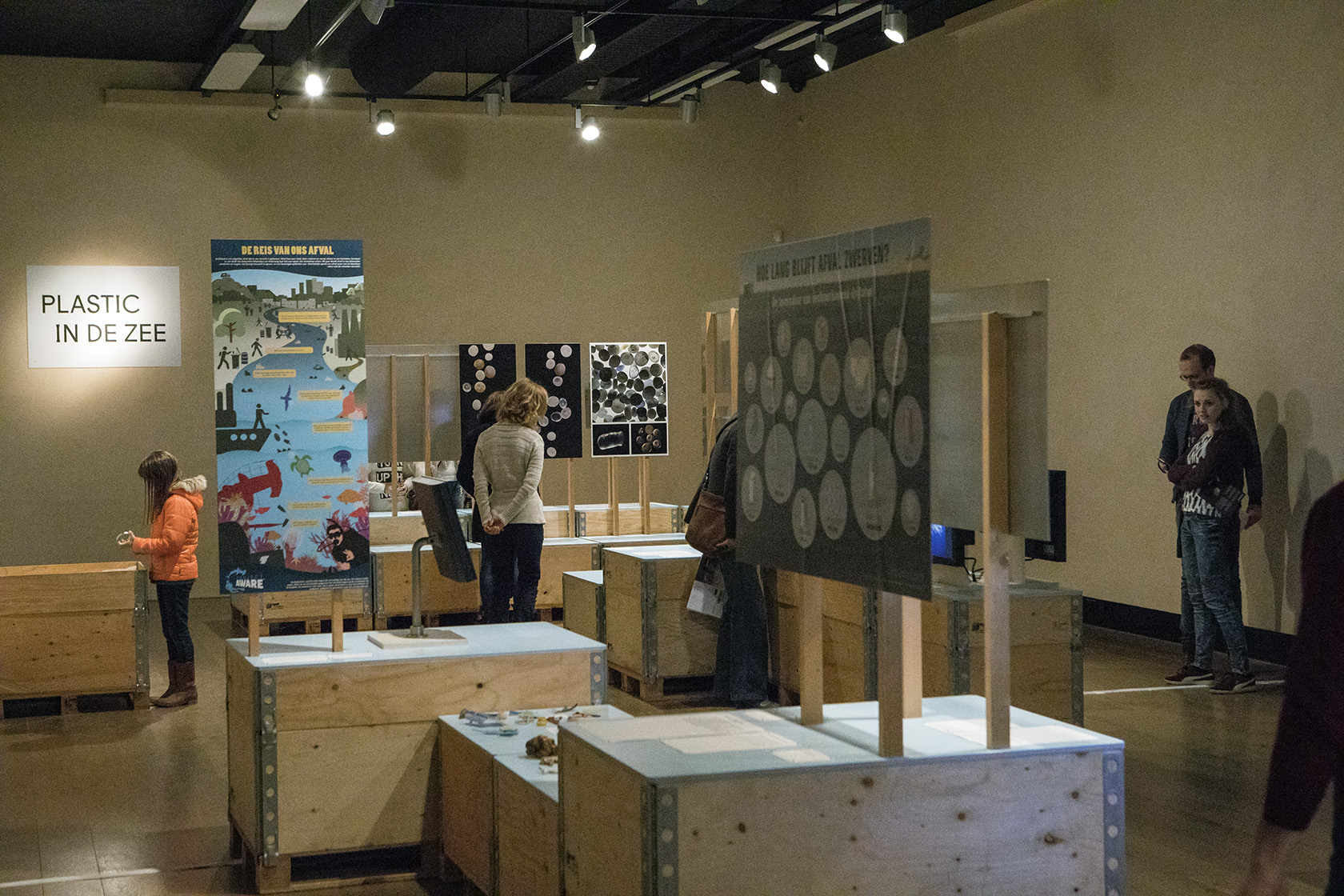Museum Het Valkhof
Nijmegen, Netherlands
10 December 2016 – 19 February 2017
Plastics have had a triumphal procession of successes since the 1950s. They are cheap and easy to produce in any desired shape whatsoever. Plastics are used for a wide range of items, from toys and LPs and disposable fries trays to medical devices, as well as hygienic packaging. Where do all those plastic products end up when we don’t need them any more?
From the moment that plastics came into our lives, the seas have gradually started turning into a vast plastic soup. Plastics are not biodegradable. They break down into smaller and smaller particles that ultimately end up in the food chain. That has major consequences for animal and human health.
Out to sea: a reality check
The travelling exhibition called "Out to Sea?" was designed by the Museum für Gestaltung in Zürich. It confronts us with the consequences of using plastics and shows us that we will need a great deal of creativity to tackle the problem.
Liquid mountain: visions of the natural versus the artificial
The second part of ‘Dossier plastic’ is ‘Liquid mountain’. ‘Liquid mountain’ encourages us to look at the issue of plastic waste from a different and broader perspective based on contemporary art. Guest curators Heske ten Cate and Hanne Hagenaars chose the laboratory – the source of the material – as their point of departure. That is where plastics originated and it may also possibly be where creative solutions can be thought up. After all, the problems are caused not so much by the materials themselves as by the actions of humans.
The guest curators invited the artists Anna Bak, Paul Beumer, Karin van Dam and Müge Yilmaz to use their own visions of “the natural versus the artificial” to create a statement in laboratory format.
Museum Het Valkhof houses a major collection of Roman antiquities, old masters, and modern art. It is located at the edge of the historic Valkhof Park, which was once the site of a Roman encampment and, many centuries later, the residence of Charlemagne. Today, you will find an excitingly modern structure for art and archaeology, designed by the renowned architect Ben van Berkel. A grand staircase leads you up to the light and spacious rooms on the exhibition floor. You can choose your own route, meandering past exceptional archaeological finds, seventeenth-century paintings, silverware, and modern paintings. The long glass gallery with its undulating ceiling offers a panoramic view of the grand river landscape beyond. Museum Het Valkhof actively strives to engage the public and regularly organizes new activities based on permanent collections or temporary exhibitions.
